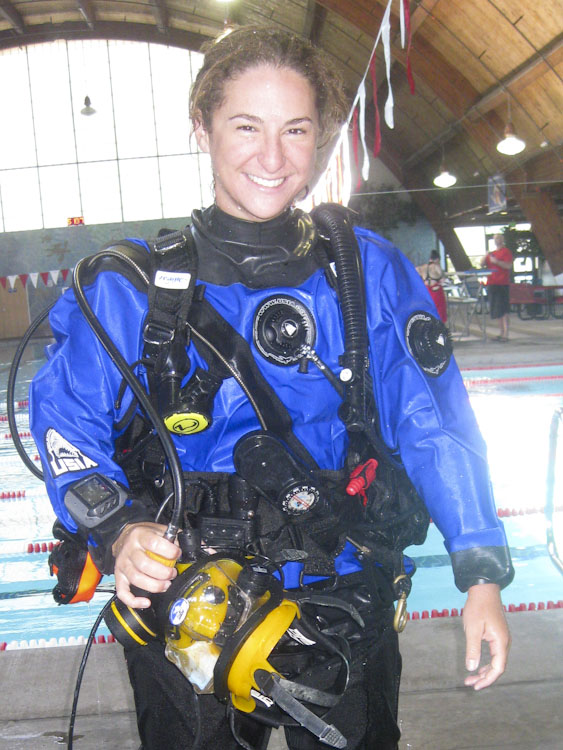Before heading to Crater Lake National Park in Oregon, I made a quick stop at the Submerged Resources Center (SRC) in Lakewood, Colorado for the weekend to pick up and try out a drysuit generously lent to me by Kim Johns, the owner of USIA. The drysuit will be needed for the frigid waters of Crater Lake where the surface temperature can reach 60 degrees, but at depth the waters can be in the 30s and 40s!
I also picked up a full-face mask for use when I head to World War II Valor in the Pacific National Monument in Hawaii, for use while diving on the USS Arizona. The water in Pearl Harbor isn’t exactly pristine, and the presence of leaking oil at the wreck site makes it preferable to dive in a full face mask. Additionally, I will be working with SRC photographer Brett Seymour to assist him while he shoots 3D video underwater, so the communication features of the mask will come in handy then.
Dave Conlin, chief of the SRC, and his wife Michelle kindly put me up for my two nights in town. Dave and I spent Saturday at the pool refreshing my drysuit skills and practicing with the full face mask. Aside from reviewing basic buoyancy skills, Dave had me practice regaining control of my buoyancy without fins, and in a mock stuck inflator valve scenario, where I had to flood my suit to avoid rocketing to the surface. The 80-degree water of the pool felt cold as it rushed into my suit—I knew I was in for a big shock when I hit Crater Lake! Dave also had me practice holding a loaded weight bag out in front of my while swimming, to simulate my camera. It was awkward at first to make sure that all the air stayed in my arms to support the weight, but I got the hang of it after a few tries.
If you are unfamiliar with how a drysuit works, it is the opposite of a wetsuit. A wetsuit traps a thin layer of water around your body, which is heated with your body heat and retains warmth. The less exchange of water there is in the suit, the warmer you stay, which is why it is always recommended to get a tight fitting wetsuit. A drysuit on the other hand insulates with air, not water. It has watertight seals to prevent any water from entering the suit, and thick fleece undergarments are worn underneath for insulation. Kind of like military grade fleece footy pajamas! The big complication of diving in a drysuit is that air undergoes changes in volume depending on pressure, so you need to keep track of your drysuit air just as you would with a BCD. As you descend and air compresses, you need to add more air to maintain neutral buoyancy. As you ascend, that air needs to be released as it expands to prevent an uncontrolled ascent to the surface. If a significant amount of air gets to your feet, that air can pull you up feet first. Hence the practice drills to ensure that I am prepared, as it has been a while since I have dived in a drysuit.
Prepped with more drysuit thermals then I hope to need, and excitement for a new place, I headed west on Sunday morning for Crater Lake, Oregon!


